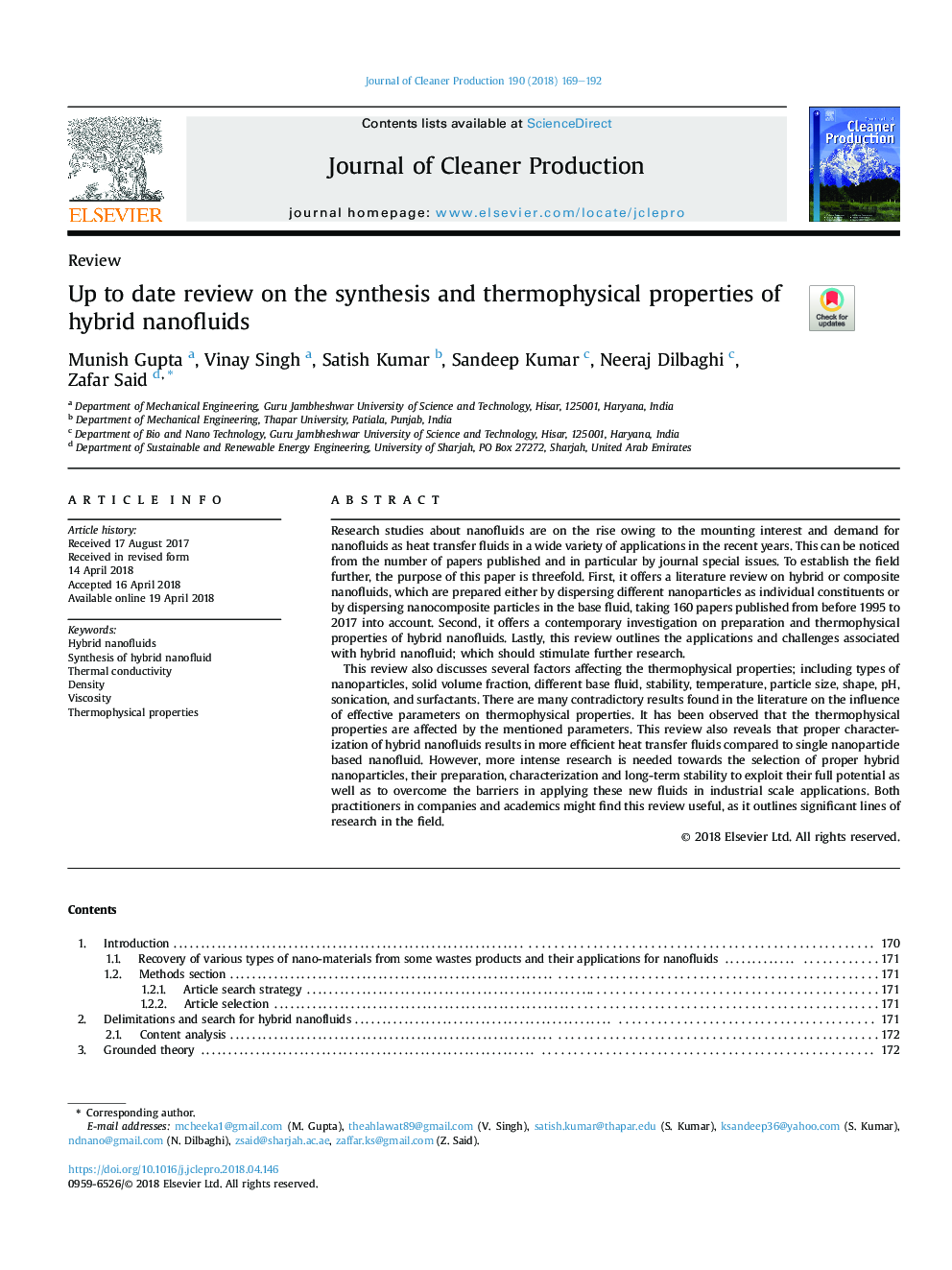| Article ID | Journal | Published Year | Pages | File Type |
|---|---|---|---|---|
| 8094901 | Journal of Cleaner Production | 2018 | 24 Pages |
Abstract
This review also discusses several factors affecting the thermophysical properties; including types of nanoparticles, solid volume fraction, different base fluid, stability, temperature, particle size, shape, pH, sonication, and surfactants. There are many contradictory results found in the literature on the influence of effective parameters on thermophysical properties. It has been observed that the thermophysical properties are affected by the mentioned parameters. This review also reveals that proper characterization of hybrid nanofluids results in more efficient heat transfer fluids compared to single nanoparticle based nanofluid. However, more intense research is needed towards the selection of proper hybrid nanoparticles, their preparation, characterization and long-term stability to exploit their full potential as well as to overcome the barriers in applying these new fluids in industrial scale applications. Both practitioners in companies and academics might find this review useful, as it outlines significant lines of research in the field.
Related Topics
Physical Sciences and Engineering
Energy
Renewable Energy, Sustainability and the Environment
Authors
Munish Gupta, Vinay Singh, Satish Kumar, Sandeep Kumar, Neeraj Dilbaghi, Zafar Said,
